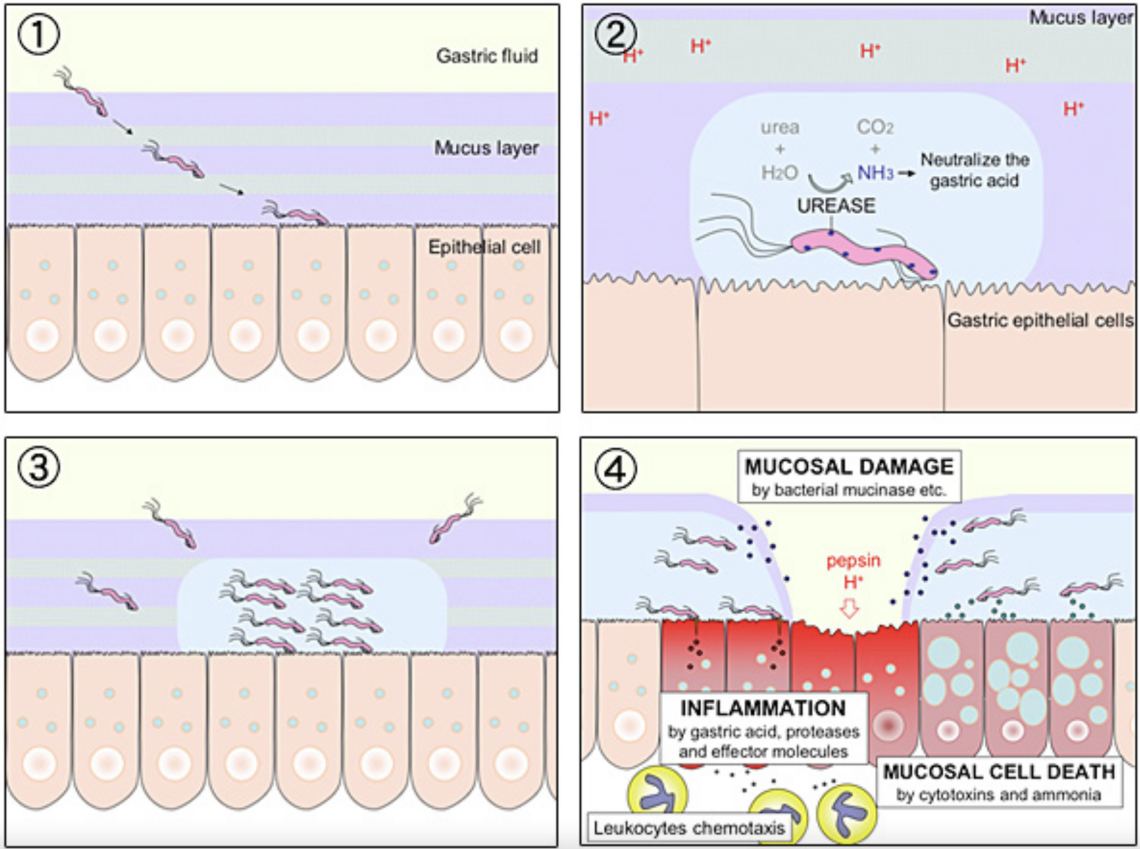H. Pylori: Transmission and Spread of Infection
Health Literacy Awareness for Helicobacter pylori
Transmission
H. pylori is commonly transmitted person-to-person by saliva. The bacteria can also be spread by fecal contamination of food or water. In developing countries, a combination of untreated water, crowded conditions, and poor hygiene contributes to higher H. pylori prevalence. Most people become infected as children, and parents and siblings seem to play a primary role in transmission.
Spread of Infection
H. pylori enters the body through the mouth, moves through the digestive system, and infects the stomach or the first part of the small intestine. The spiral-shaped bacterium uses its tail-like flagella to move around and burrow into the stomach lining, which causes inflammation.
Unlike other bacteria, H. pylori bacteria can survive in the harsh acidic environment of the stomach because they produce a substance that neutralizes stomach acid. This substance, urease, reacts with urea to form ammonia, which is toxic to human cells. Depending on where the infection occurs in the stomach, H. pylori can also cause overproduction of stomach acid.
Diagram of H. Pylori Infection

Source: Y_tambe, dual-license with GFDL and CC-by-SA, http://upload.wikimedia.org/wikipedia/commons/5/51/H_pylori_ulcer_diagr…
Progression
While there is no formal progression of the H. pylori infection, several steps are well documented. This process is very slow, taking decades, and may stop at any step because gastric cancers probably require several other factors to develop in addition H. pylori infection.
-
Stage 1:
-
Normal stomach lining (mucosa)
-
Stage 2:
-
Inflammation of the stomach lining (chronic gastritis)
-
Stage 3:
-
Loss of stomach cells and impaired digestive system (atrophic gastritis)
-
Stage 4:
-
Transformation of the stomach lining (intestinal metaplasia)
-
Stage 5:
-
Beginning stages of stomach cancer (dysplasia)
-
Stage 6:
-
Stomach cancer (gastric adenocarcinoma)
Learn more about H. Pylori
Disclaimer: Content provided by the Mel and Enid Zuckerman College of Public Health website is intended for educational purposes only. The information contained within is in no way intended to serve as, nor provide a substitute for, medical consultation, advice, treatment or service. Users should confirm any information contained on this website with their physician. The Mel and Enid Zuckerman College of Public Health and the University of Arizona shall not assume responsibility for any direct, indirect, consequential, special, exemplary, or other damages arising there from.

